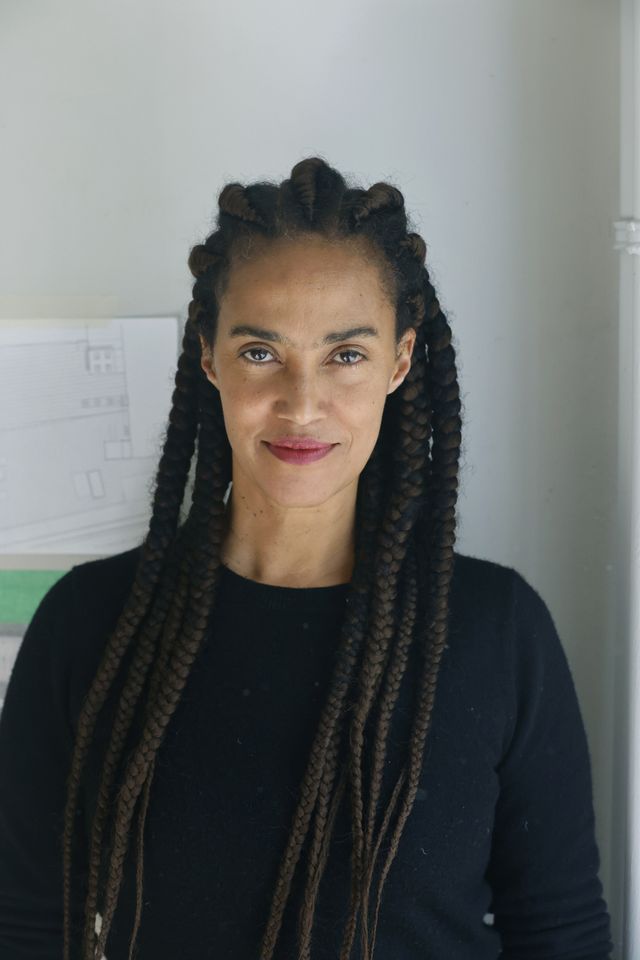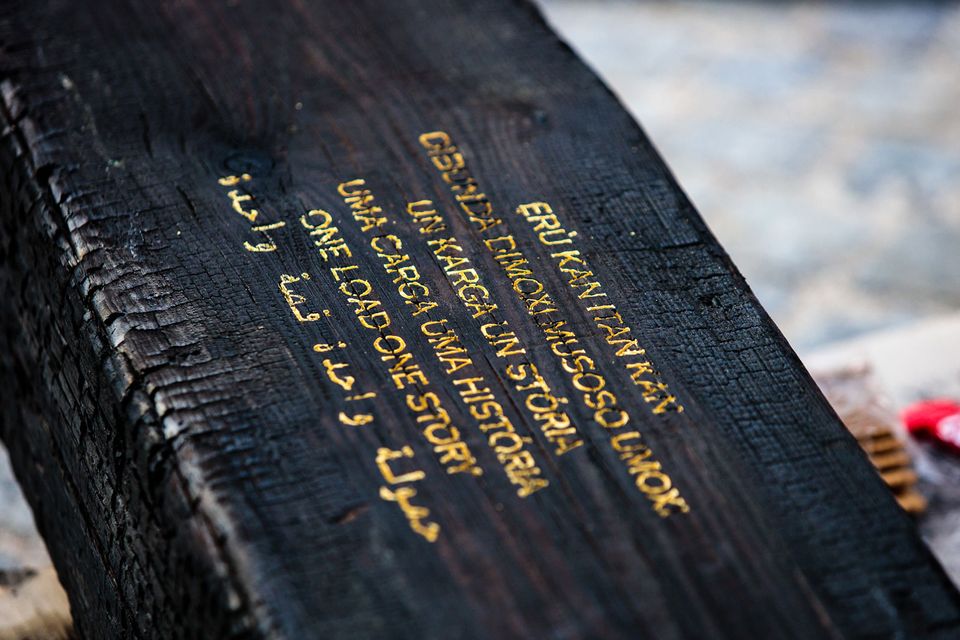
The Berlin-based Portuguese artist Grada Kilomba has unveiled a 32m-long boat installation along the Tagus river in Lisbon today. The work, titled O Barco/The Boat and made from 140 burned woodblocks with poems and phrases inscribed into them, was commissioned for the Biennial of Contemporary Art and is part of Kilomba’s solo show at the Museum of Art, Architecture and Technology (Maat).
Kilomba created the installation partly in response to how the history of slavery and colonialism is often not addressed in the public realm in Lisbon, as well as many other major European cities such as London, Paris and Madrid. “You walk around the city, along the river and you have these huge monuments of what they still call ‘the discoveries’ and the boat becomes a metaphor of this glorious time,” Kilomba says. The ship has become a symbol of Western countries’ might, and Kilomba wanted to create a sculptural installation that revealed the other side of this celebrated period. “My question is, what were these boats carrying? What were they transporting and who was inside of them?”

Each burned piece of wood making up O Barco has different textures that represent wounds and scars on the human skin. Kilomba says that “you literally have to cry when you touch the wood because it transmits so much history.” The blocks represent the bodies of millions of kidnapped Africans who were lined up in the hulls of slave ships heading for European empires.
Kilomba’s art often draws on memory, trauma, violence and the post-colonial condition. She is best known for her subversive writing and poetic imagery relating stories silenced by colonial narratives. Her work brings up questions about whose bodies can be recognised and acknowledged, be allowed to have a place of rest, buried, and have a name and a place to be mourned. Kilomba says her work “represents the history of the African diaspora and of many other diasporas of having to live with this politics of erasure”. The importance of ceremony and ritual are also explored in her installations. As well as the installation, there are further strands to O Barco including readings; performances with dancers, a gospel choir and percussionists from African diaspora; and a film by Kilomba documenting the process of creating the work.

Kilomba describes her artistic practice as “performing knowledge”, using a poetic visual language to counteract dark and heavy subject matter. The artist works with contrasts that people may not expect, such as getting ballet dancers to move to the heavy beat of drums for a musical performance with O Barco as a backdrop.
Her academic background in psychoanalysis has also influenced the projects Kilomba produces. “With psychoanalysis, you work with violent histories”. Kilomba seeks to create work that the audience can identify with and ask questions, creating dialogue that deals with violence in a way that educates and provides healing. “How do you transport grief into movement, sound and music?” she asks. Kilomba hopes that after Lisbon the exhibition can travel around Europe as a space for remembrance, memory, ceremony and contemplation.
• Grada Kilomba: O Barco/The Boat, Museum of Art, Architecture and Technology, Lisbon, 3 September-17 October; performances take place on 3 September, 25 September and 17 October
Source link : https://www.theartnewspaper.com/preview/boat-installation-unveiled-for-biennial-of-contemporary-art-in-lisbon-highlights-hidden-histories-of-slavery-and-colonialism












